by Christine Pesta
Over the decades, when it has come to clothing, furniture, and even automobiles, image has been everything. Marketing firms and the media have saturated us all with product advertising that, if you wished to be stylish, trendy, or climb those social rungs, were “must-haves” to achieve that end.
Most often pushed has been leather. Products labeled, “genuine leather”, “fine leather”, or “imported leather”, have been sought after items to purchase. Just as with food, by calling a product “leather” it takes a step in removing it from its source. No one usually advertises a purse, shoes, or sofa as cow or pig leather. Sometimes one might see “calf skin” or “ostrich” on a product to suggest its quality or exotic nature. These items are purchased because they are marketed in such a way that the consumer does not associate it with animal cruelty. Most people simply choose to connect their favorite handbag with the death of an animal. If they did, there would most likely be fewer of those handbags sold.
Fortunately, there has been a rise in the purchasing of cruelty-free products, including clothing and accessories, as people become more ethically and environmentally conscious. Many brands and designers have made the decision not to include animal products in their clothing and accessories any longer, and are encouraging and inspiring their peers to do the same. As a result, it has become much easier for vegans to find stylish products at local stores that are in keeping with their lifestyle.
For those not vegan, or at the start of their vegan lives, it may not be completely clear as to what is off limits if you wish to lead a more compassionate lifestyle. Below is a guide to items that one would not purchase if living a cruelty-free life.
Leather and Fur
The skin of a once living creature is leather. It might be derived from a cow, goat, alligator, or even a kangaroo. Birds and snakes are also commonly used to make clothing and accessories. Fur is most commonly taken from animals such as minks, chinchillas, seals, and foxes. With leather, aside from the obvious issue of the animal being killed for food, the environmental impact the processing of their skins has on the planet is tremendous. Both waterways and soil are contaminated with the runoff of the toxic chemicals produced by the manufacturing plants that create leather. Many animals raised for their fur are usually subjected to a life of cramped cages and painful deaths. Most people never make the connection as to how much pain and suffering was caused in order for them to have the items they drape across themselves, sit on, or otherwise proudly display every day.
Shopping for products advertised as, “vegan leather”, “cruelty-free”, and “PU” (polyurethane), are a good place to start when trying to replace leather materials in your clothing and furniture. Even car companies have become more aware of the increasing requests from consumers for non-leather interiors within automobiles.
Down and Feathers
Comforters, pillows, and some clothing can be either filled with, or decorated with, down or feathers. While down and feathers are sometimes removed from the animal carcass, in many instances, they are taken from the birds while still alive.
These products can also be replaced with featherless or down-free items. If you just love that winter jacket or comforter you’ve had for years, there are many name-brand companies that have products to keep your body warm and your conscience clear.
Silk and Wool
When it comes to clothing, cashmere has traditionally been somewhat of a luxury item. Ask some where it comes from, and they could not even tell you that it’s the hair from a goat – they just know having it allows them to brag about the cost of their coat or sweater to friends. Angora from rabbits, and wool or shearling from a sheep or lamb are also frequently bought and found in many products. They are all taken very cruelly from the animals involved. The gathering of the hair – and many times, skin – always involves horrible abuse, and quite commonly results in their death.
Silk is also extracted cruelly from the silkworm, which dies as a result of being boiled alive in its cocoon. While many people favor silk shirts, scarves, or other accessories, most are unaware of the process involved that brings this “luxurious” fabric into their lives.
Many companies now use fabric derived from plant sources, to mimic the texture of silk or wool, so as not only to offer a product free from the harming of any living creature, but to provide a much more affordable option to consumers.
An increasing number of companies have ceased to use animal products, and some countries have even placed a ban on certain farming and manufacturing practices involving the fabric and fashion industries.
While it is the practice of most consumers to “shop wisely”, until recently, there has not always been a concern with shopping compassionately. For vegans, shopping with compassion is shopping wisely. Find out more about the products you own, and which of them would be considered vegan. For those things that you wish to replace because they are not, a quick reading of labels or search on the Internet will give you an idea of the hundreds of options available to you.









